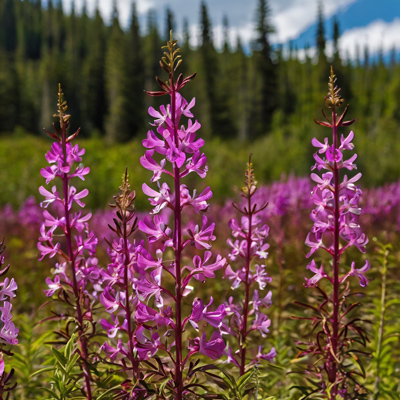
2023 Wood Buffalo Wildfires
Wood Buffalo National Park
History
Fire is a natural part of the boreal forest ecosystem in Canada. It is one of the main ways the forest renews itself. Although we often view natural disturbances as destructive, they play a crucial role in keeping ecosystems healthy. The boreal region’s cold climate slows the decay of logs, leaves, and other organic matter on the forest floor. Fire reduces this material to mineral-rich ash, releasing and recycling nutrients into the soil, which encourages the soil’s microbial activity and plant regrowth. In 2023, Canada experienced a historic wildfire season unlike any other, exceeding 13 million hectares burned. Several fires burned within Wood Buffalo National Park totaling 929,521 hectares or approximately 20 percent of the size of the park.
What to expect
The Wood Buffalo Complex Wildfire impacted the park in many ways. This wildfire burned 504,752 hectares, both inside and outside of the park and impacted all of the recreational trails within Wood Buffalo National Park as well as the Salt Plains Day-Use Area.
We’re committed to continuing to provide you with a great experience. There are a few things to consider when visiting post-2023 fire season:
- Fire-related area closures may still be in place due to remaining hazards. Please respect all area closures.To get the most up-to-date list of open and closed areas, please visit our website parks.canada.ca/woodbuffalo.
- If you’ve visited us before, many forested areas may look different than the last time you were here. Look for new growth and wildlife in the post-burnt landscape.
- Be cautious of fire-weakened trees. Many trees are still standing post-fire but they can be weakened or have burnt-out roots, causing them to fall over without warning. Be aware of changing conditions, like wind, and avoid these areas if in doubt.
- Open visitor areas have been deemed safe by specialists. When adventuring outside of these areas, consider the risks. Ash pits are hard-to-see holes in the ground where fire has consumed underground fuels and created an empty space. They can cause burns and injuries, so be cautious when traveling in backcountry areas.
- Report any wildfires or suspicious smoke to the Fire Duty Officer at 867-621-0136.

Did you know?
- After fire, the mineral content from ash improves soil, which promotes new growth and helps create new habitats for animals.
- The benefits of fire can be seen almost immediately, with new vegetation sprouting in a matter of weeks thanks to the new deposits of mineral rich ash in the soil.
- Plants and animals in the boreal ecosystem have evolved to adapt to fire on the landscape and some species, such as jack pine, rely on fire to open their seed cones to reproduce.
- Long term, fire increases food sources for animals and encourages habitat variety and abundance.
- Fireweed is often the first plant to grow following a forest fire. Keep an eye out for this purple flower during your visit.

- Date modified :